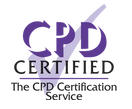
Learn the basics of
Fitness Instruction
In this module we build a solid foundation for our fitness journey. We discover all the fundamental concepts, principles, and body systems. Having a solid foundation ensures we are ready to move on from basic and intermediate concepts.
253k
Graduates
All levels
Certified

Course details
MODULE 1
Diploma in Fitness and Weight Loss
MODULE 1
Diploma in Fitness and Weight Loss
1.Introduction to Fitness
In the first lesson, we look at the physiological and mental benefits of exercise. We look at the the different reasons people are exercising through three typical client profiles. Using the information learnt we identify how it best applies to you and create a personalised workout.
2.Fundamental Principles of Exercise
In this online class, we explore the different ways in we are able to make changes to a training programme to ensure you are achieving results based on your needs.
3.Thinking SMART (SMART Goal Setting)
In lesson 3, we study the art of creating goals which result in success. We will apply the SMART method and create goals for ourselves as well as obtain the skill to teach others how to use this goal setting method.
4.Anatomy 101
In lesson 4, we study the most commonly used muscles. We will look at how these muscles move in relation to others as well as during a variety of exercises.
5.Exercise Application to Anatomy
In this personal training class, we utilise the knowledge obtained from the previous lesson to explore a variety of exercises for the muscles previously learnt. We will explore how these muscles move while performing certain exercises as well as how to ensure correct form and posture for optimal muscular recruitment.
6.Physiology 101
In lesson 6, study the different biological systems most commonly referred to in exercise. Namely; The cardiovascular, the respiratory and the digestive system. We discover how they work and the effects of exercise on each system. In this lesson we will also look at how to test the systems and use the findings to adapt our programs accordingly.
7.Fitness Testing
In class 7, we study different ways of testing the body to create a personalised workout program. Once we've looked at the theory we practically do the test ourselves and record the findings to apply to your workout programme.
8.Energy Systems 101
In lesson 8, study the different energy systems in the body. We discover how and when the body uses the energy systems and how they adapt to different training.
9.Hydration and Healthy Eating Habits
In lesson 9 of this personal training course, we discover the impact of healthy eating and proper hydration. We also look at how habits are formed as well as how to break bad habits and create new good ones.
10.Popular Weight Loss Diets and Myths
In lesson 10, we explore a variety of diets which have been said to aid in weight loss. We study the science behind the diet as well as the effectiveness.
MODULE 2
Intermediate in Fitness and Weight Loss
MODULE 2
Intermediate in Fitness and Weight Loss
1.Fueling the Body
In the first lesson, we will explore the benefits of fueling the body correctly, and how we can do so. Providing the human body with fuel; food or energy will result in the maximum output. If we think about driving our favorite car. We know we need to fill it up with gas for it to run, as it is our favorite car we also want to make sure we are only filling it with the best gas. Your body is the same, except you only have one, so we will discover exactly how to make sure we fuel it to run in the best possible way.
2.Carbohydrates, Fats and Protein
In lesson 2, we will have a look the different categories food is generally into. Carbohydrates, fats and proteins; most of use have a general idea of which food types fall under certain categories, in this class on personal training we will take our knowledge to the next step by looking each category in more detail.
3.Advising Nutritionally
TIn lesson 3, we will look at exactly what a nutritionist does, as well as how we as the general public are able to give nutritional advice to friends and family.
4.Metabolic Training
In this personal training class, we will have a deeper look into what exactly metabolic training entails, in module 1 we superficially had a look at what metabolic training is and what the general programming for metabolic training is. In this lesson we will learn exactly how to programme effectively for all fitness levels for metabolic training.
5.Strength and HIIT Training
In lesson 5, we will discover how to create a strength training programme, using all the strength training principles and how they can be manipulated. We will also have a look at how we can create a H.I.T.T training programme effectively, and lastly we will see what they difference is between the two.
6.Aerobic and Anaerobic Training
In this online class on personal training, we gain a comprehensive understanding of aerobic and anaerobic training programmes; the differences, how to programme for them and which is best suited to your needs.
7.Flexibility and Mobility
In lesson 7, we will explore the importance of flexibility and mobility in all training programmes. We will discover the difference between the two, as well as when they can appropriately be used in a training programme. In this lesson we will also gain an understanding of how to apply flexibility and mobility into our personal programmes.
8.Programming and Nutrition
In lesson 8, we will create a few detailed exercise programme incorporating all the information learnt throughout the module. We will explore exactly how all the information fits together and can be used to create the ultimate workout programme.
MODULE 3
Advanced in Fitness and Weight Loss
MODULE 3
Advanced in Fitness and Weight Loss
1.Seven Fundamental Movements
For the human body to move effectively it needs to be comfortable and able to perform the fundamental or the primary movements. In lesson 1 we will have a look at how the seven fundamental movements were chosen or discovered, what the seven fundamental movements are, how to perform them, and incorporate them into our programmes.
2.Progressions and Regressions
When creating a workout programme, it is of utmost importance to ensure the programme is at a level that an individual is capable of. A programme can be either be made easier or harder by adding regressions or progressions. In lesson 2 we will learn how to progress or regress any given exercise to best suit an individual's fitness level and needs.
3.Common Injuries, Injury Prevention and Rehabilitation
Many people suffer from many different injuries, therefore it is important to understand the most common injuries, what their restrictions are, as well as how to prevent or recover from them. In lesson 1 we will have a look at all the different injuries and how to overcome them if possible.
4.Health and Safety in the Fitness Industry
Healthy and safety is always number one. Before being able to work in any fitness work space it is important to know all the health and safety protocols. In lesson 4 we will discover the basic health and safety practices to ensure safe exercising.
5.History of the Fitness Industry
The fitness industry has changed varsly since the beginning of time. In lesson 5 we will explore where fitness started and take a look at the evolution of the fitness industry. We will also take a look at how the perception of health and wellness changes regarding food and body shapes.
6.Back Pain
We often hear about or know people who suffer from back pain. In lesson 6 we will look at the common causes of back pain and how we could possibly reduce back pain where it is possible.
7.Motivating Clients
The only way to complete a fitness programme is to remain motivated throughout the programme. In lesson 7 we discover different motivational techniques, as we have seen so far there are many different personality profiles therefore we find the best way to motivate each.
8.Advanced (Complete) Programming
We ended off the previous module byt creating our first baic draft of a workout programme, and understood how we could calculate the required calorie intake. In lesson 8 we will be taking that programme to the next level, by using all the newly learnt knowledge to bring us one step closer to achieving our goals.
MODULE 4
Proficient in Leadership & Management
MODULE 4
Proficient in Leadership & Management
1.Client Assessments
The final module starts with gaining the key skills and knowledge to perform a health screening and create a training session according to the results.
2.Scheduling
There is only so much the human body can handle, it is important as a fitness profession you are setting yourself up for success. Creating a schedule which best suits your needs as well as your clients needs.
3.Professionalism
Every industry has different rules and expectations regarding professionalism. In this lesson we learn about the dos and don'ts of the fitness industry.
4.Basic Business Plan
The lesson equips the students to set up a basic business plan so start a small personal fitness business.
5.Fitness Marketing
Every small business needs to market itself effectively to be successful. In this lesson the student will learn the key skills and knowledge to market their personal business.
6.Finding Your Niche/Career Path
Everybody has a unique skill and interests. The lesson is designed to assist the student to venture into the fitness world and find out what their keen interests are.
7.Fitness Networking
The fitness industry is a very close knit community. There is no set rules when it comes to networking, although in the fitness industry like minded people attract. In this lesson we will look at the world biggest fitness expos and conferences.
8.The Final Product
Throughout this course we have gained many different skills and knowledge to create a fitness programme from themselves or for others.
